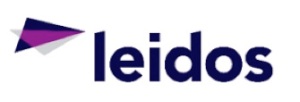I. E. du Pont de Nemours and Company. This impressively aristocratic name is better known as plain DuPont, the world’s fourth largest chemical company.
Founded in July 1802 as a gundowder mill by one Éleuthère Irénée du Pont, it supplied the Union Army in the Civil War and went on to specialize in the poylmers that made it famous.
Du Pont was born in Paris in 1771. His father, Pierre Samuel du Pont de Nemours, was a political economist who had been elevated to the nobility in 1784 by King Louis XVI, allowing him to carry the honorable de Nemours suffix, Nemours being a picturesque ‘commune’ in the Île-de-France region in north-central France.
Little wonder then the company should look fondly on Nemours as the name for the spinoff of its performance chemicals business, embedded as it is in the heritage of the company and the duPont family’s noble French origins.
Nemours was a natural, except that the duPont family had already endowed the name to The Nemours Foundation, a pediatric health system operating in the Delaware Valley and in Florida.
The problem was neatly side-stepped by the creation of Chemours, a sound-alike name that also invokes French place names à la Cherbourg, Chantilly, Chartres, Charmant, Chambery and Chinon.
 A nice idea, but it’s not at all what DuPont had in mind; it wants to be sure that people know the performance chemicals business is a performance chemicals business and has, therefore, declared Chemours be pronounced ‘Kem-oars’, with a ‘k’ for chemicals and not a ‘schh’ for château.
A nice idea, but it’s not at all what DuPont had in mind; it wants to be sure that people know the performance chemicals business is a performance chemicals business and has, therefore, declared Chemours be pronounced ‘Kem-oars’, with a ‘k’ for chemicals and not a ‘schh’ for château.
Sad. My mistake. I got carried away by the romance of it all. I just thought… a company with such a flair for naming its inventions – Vespel, Corian, Teflon, Freon, Mylar, Kevlar, Zemdrain, Nomex, Tyvek, Sorona and Lycra – might have been more inventive with an historic spin-off dedicated to “applying great chemistry to make a colorful, capable, and cleaner world.”




